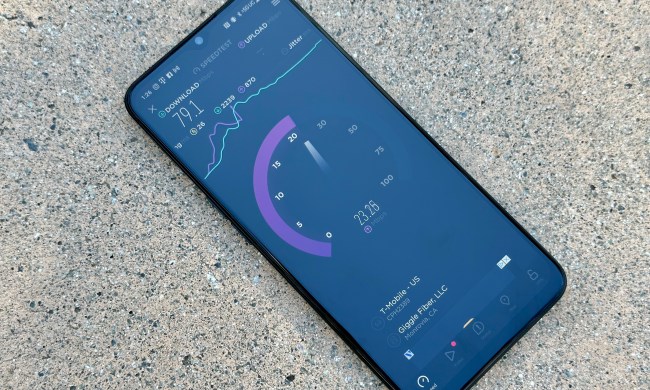Have you ever wondered what makes 5G so unique relative to the other “G’s?” The answer, in a word, is latency. And even if you don’t know what that is yet, it makes a big difference in the way you use your phone, whether that’s hailing a rideshare, unlocking a scooter rental, or streaming a favorite show or movie.
Here’s why 5G is fundamentally different from all the other G’s, how critical cellular networking elements make it work, and all you need to know about the role that licensed spectrum plays in making it all a reality.
Defining the G’s
G stands for generation, and every level represents a significant step up over the last. First there was 1G, which provided voice-only services over an analog network, and the service was fraught with dropped calls and poor security. Next up, 2G brought the advent of a digital network, and with it significant improvements in security, quality, and something we pretty much all use on a daily basis today – text messaging. Then came 3G, which represented another technology leapfrog that saw mobile data support for web browsing and video calls (and Apple’s launch of the iconic iPhone). Today, 4G is the standard we enjoy. It brought improved throughput and performance, and helped birth some of the disruptive services previously mentioned.
So what makes 5G anything more than just faster? the answer is improved latency.
Latency is the time it takes for a packet of data to travel from a sender to a receiver over a network: The lower the latency, the more responsive an application, especially if it is video intensive. Measured in milliseconds (ms), today’s 4G networks ring in at around 50ms, compared to an expected sub-5ms latency for 5G. The latter equates to nearly real-time responsiveness, and is so fast it may even replace your home internet. No wonder carriers globally are eager to deploy
The parts that make it work
Core network components serve as the central part of a cellular network. They knit together mobile, fixed, and converged connectivity to ensure a more consistent user experience. The switch to 5G also brings the use of more industry-standard hardware and open-source software. Companies that deliver server, storage, and virtualization platforms such as Dell EMC, Hewlett Packard Enterprise, and VMware have made significant inroads into the telecommunications space, which has brought disruption from a cost and deployment perspective.
Some of the more recent capabilities that have come to core networking include machine learning, artificial intelligence (A.I.), and software-defined networking (SDN) tools. There is a degree of whitewashing with some, if not all, of these platforms, but the benefits are real. Those include faster deployment, self-healing for improved uptime, and network slicing to guarantee the quality of new service and new monetization opportunities for carriers and service providers.
Radio access network (RAN) components, on the other hand, play an essential role in how your smartphone or mobile device communicates across a cellular network. These include base stations, antenna arrays, and small cell platforms. Base stations are fixed points of communication within a cellular network designed to cover a specific geographic area. Based on the need for radio coverage, they can take the form of:
- Macrocells that cover a wide area and are typically found on towers
- Microcells that are used for densification of coverage in highly populated areas that can be found mounted to streetlight poles and traffic signals
- Picocells that boost coverage within buildings.
There has recently been an intense focus on Open RAN, which started as an effort by some U.S. government agencies to decrease dependence on foreign suppliers in the name of national security given the critical nature of telecommunications infrastructure. Open RAN also promises to lower operator capital and operational expenses given some of the similarities to the aforementioned core networking trends. As a result, several organizations are making it a reality, such as the Open RAN Policy Coalition, O-RAN Alliance, and Telecom Infra Project (TIP). This alphabet soup may be tough to follow, but the takeaway is that Open RAN is poised to reduce costs and speed deployment, which could be a positive thing for new subscribers.
Licensed spectrum
The best way to view licensed spectrum is in three buckets: The low, mid-, and high bands.
For 5G, the low band provides wide coverage, but only a modest improvement over 4G LTE. T-Mobile has been keenly focused on building out its low-band spectrum assets to offer the most expansive
Still seeking the killer app
The hype cycle for 5G may be at its apex, but don’t be dismayed if it feels long in coming. The reality is that



